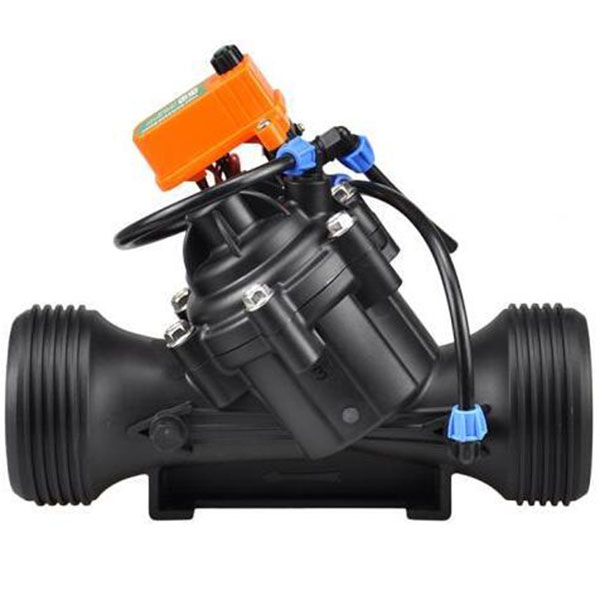The electrical control of solenoid valves works by using an electromagnetic coil to actuate the valve mechanism. A solenoid valve consists of a coil and a valve body with an inlet and an outlet. When an electrical current is applied to the coil, it generates a magnetic field that attracts a plunger or armature within the valve. This movement of the plunger opens or closes the valve, allowing or blocking the flow of fluid through the valve body.
Typical voltage and power requirements for solenoid valves can vary depending on the specific valve model and application.
However, here are some common voltage ranges and power requirements:
Voltage: Solenoid valves are available in a range of voltages, including 12V DC, 24V DC, 24V AC, 110V AC, and 220V AC. The specific voltage required for a solenoid valve depends on the electrical system of the application and the availability of power sources. It is important to ensure that the voltage supplied to the solenoid valve matches the valve’s rated voltage to ensure proper operation.
Power Consumption: The power consumption of solenoid valves is typically measured in watts (W) or volt-amperes (VA). The power consumption can vary depending on factors such as the size of the valve, the coil design, and the operating pressure. Generally, solenoid valves have power consumption in the range of a few watts to tens of watts. It is important to consider the power requirements of the solenoid valves when designing the electrical system and selecting the appropriate power supply.
It is crucial to refer to the manufacturer’s specifications and guidelines for the specific solenoid valve you are using, as they will provide accurate information on the voltage and power requirements. It is also important to ensure that the electrical control system, including the power supply and wiring, meets the electrical specifications and safety standards to ensure reliable and safe operation of the solenoid valves.
What are the common applications for solenoid valves in industrial and commercial settings?
Solenoid valves have a wide range of applications in industrial and commercial settings due to their ability to control the flow of fluids.
Some common applications include:
Process Control: Solenoid valves are used in various industrial processes to control the flow of liquids or gases. They are employed in industries such as oil and gas, chemical, pharmaceutical, food and beverage, water treatment, and many others. Solenoid valves enable precise control of fluid flow rates, allowing for automation and optimization of processes.
HVAC Systems: Solenoid valves are used in heating, ventilation, and air conditioning (HVAC) systems to regulate the flow of refrigerants, hot water, and chilled water. Solenoid Valve For On & Off Control They play a critical role in controlling the temperature, pressure, and distribution of fluids in HVAC applications, ensuring efficient and reliable operation.
Water and Irrigation Systems: Solenoid valves are widely used in water supply and irrigation systems to automate the control of water flow. They are commonly found in residential, commercial, and agricultural settings, controlling the opening and closing of water lines, sprinklers, and drip irrigation systems. Solenoid valves allow for precise timing and zoning of irrigation, conserving water and improving efficiency.
Pneumatic Systems: Solenoid valves are extensively used in pneumatic systems, which rely on compressed air or gas to power machinery and equipment. They control the flow of compressed air or gas to actuate pneumatic cylinders, control valves, and other pneumatic components. Solenoid valves enable precise and rapid switching of pneumatic signals, facilitating automation and control in manufacturing and industrial processes.
Automotive and Transportation: Solenoid valves are found in various automotive and transportation applications. They are used in fuel systems, transmission systems, braking systems, and engine control systems. Solenoid valves play a crucial role in regulating fuel flow, transmission shifting, and actuating various functions in automotive and transportation equipment.
Safety and Emergency Shut-off Systems: Solenoid valves are employed in safety systems to quickly shut off the flow of hazardous materials or fluids in case of emergencies. They are used in applications such as fire suppression systems, emergency gas shut-off systems, and chemical spill containment systems. Solenoid valves provide a reliable means of rapidly stopping the flow of fluids to mitigate potential risks.
These are just a few examples of the many applications of solenoid valves in industrial and commercial settings. The versatility, reliability, and precise control offered by solenoid valves make them suitable for a wide range of fluid control tasks in various industries.
